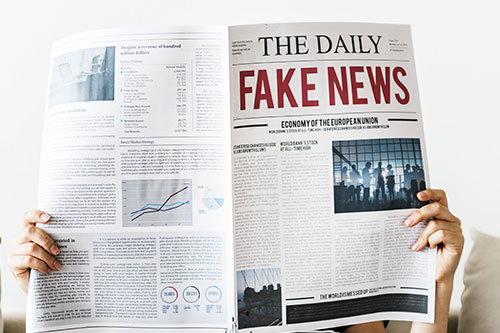
How important is earned media and what role does media relations play in the fake news era in which we live?
Today, more than ever, people are confused about the credibility of what they see or hear on the news. Sadly, some people now say they don’t know what to believe, so they dismiss all news as untrustworthy, which is like throwing the baby out with the bathwater. Journalists are actually working extra hard to double check facts and sources to make sure they continue to be viewed as a trusted source for information. PR professionals working in media relations also have a role to play in helping to dispel this spread of fake news.
But first, let’s look at a bit of history. Fake news, after all, isn’t a new phenomenon. Call it what you want – fake news, yellow journalism, tabloid journalism – but it has been around since newspapers first began to be printed. Yellow journalism is a term coined in the United States to describe news outlets that published information with exaggerated or sensationalized information or headlines. In other countries, it has sometimes been called tabloid journalism – after the types of tabloid publications one might see on the news rack while standing in line at the grocery store. The ones with the headlines that usually end with an exclamation point and seem to scream at us:
“Mushrooms Beat Cancer”
“Bat Child Escapes!”
“Eating Fat is Good for You”
“Oprah Caught in Blackmail Scandal!”
Somehow, over time, people have begun to equate established, real news outlets with “fake news.” The fact is, every day there are reporters out there working their beats, and there are editors and producers in newsrooms across the country reviewing copy, writing headlines, honestly trying to present objective, fact-based stories. So, if tabloid journalism has been around for many years, what has changed about people’s ability to discern real news from fake news? Factual information from the sensational?
For one thing, the growth of social media and the disintegration or inability to discern between what are real news outlets and what are not have contributed to the problem. According to a Pew Research Center study released in December 2018, one in five adults in the United States reported getting their news through social media, a number that came in slightly higher than those who said they got their news from print newspapers for the first time since Pew began asking the question about social media as a news source. And in looking at how people in different age groups devour their news, the divide is apparent: People ages 18 to 29 were four times as likely to get their news through social media as people age 65 and older. In fact, 36% of those ages 18 to 29 said social media was their most-used news platform, topping actual news websites, TV, radio or print. Only 27% reported getting their news from news websites.
While social media is increasingly becoming the way that the public, especially younger audiences, find their news, people do still seem to trust what they see or hear. Pew Research also found that 21% of adults place a lot of trust and 49% of adults place some trust in the information they receive from national news outlets.
While journalists are doing what they can to build on that confidence by being diligent about checking facts, citing credible sources and remaining objective in their reporting, PR professionals also can and should play a role in helping to put a lid on the apparent rise of what people call “fake” news. After all, our livelihood depends on our ability to earn attention for our clients in news stories in order to build their credibility and awareness. While we pursue these earned media placements, there are some things we should prioritize.
- First, making sure to develop and maintain relationships with legitimate news outlets is crucial. Having a story placed in a blog is not the equivalent to having a story placed on the front page of the Sunday business section. Building those relationships with journalists is the hard part; we have to know reporters’ beats, know what they like to cover, be aware of stories they have written, and know when and how to send them good story ideas and sources. The consolidation of news outlets and the shrinking news staffs across the country are also making this job more difficult because news staffs are constantly changing.
- When we produce content, we need to be diligent and make sure that we are citing sources when we state facts or present information and that we are fact-checking our own copy. And that rule should apply whether it’s a fact in a press release, a LinkedIn column, a Facebook post or a blog post. By demonstrating a commitment to truthfulness, companies build on their reputation for honesty, which also helps build public confidence in their brand.
- Companies should monitor their own social media and respond immediately when they see incorrect information or statements being made.
We know that earned media still works. Being quoted in a legitimate news outlet or having a business feature run about your company are the kinds of placements that serve as a type of third-party endorsement for our clients. As media relations professionals, it is our job to stay on top of an ever-changing media landscape to find the best and most trusted news outlets to gain that exposure for our clients. In order to accomplish that, we must be faithful to the truth ourselves and make sure that we become known as the trusted, reliable sources that journalists need to do their jobs better.

